Family crests from Estonia, Latvia & Lithuania
in a 1902 calendar of colour woodblock prints
Each coat of arms^ has the corresponding family name printed (in some swish, Art Nouveau-influenced fonts!) on each illustration. Although only heraldic designs are shown below, the album actually consists of a brief calendar section, the series of heraldry illustrations, followed by short family histories.

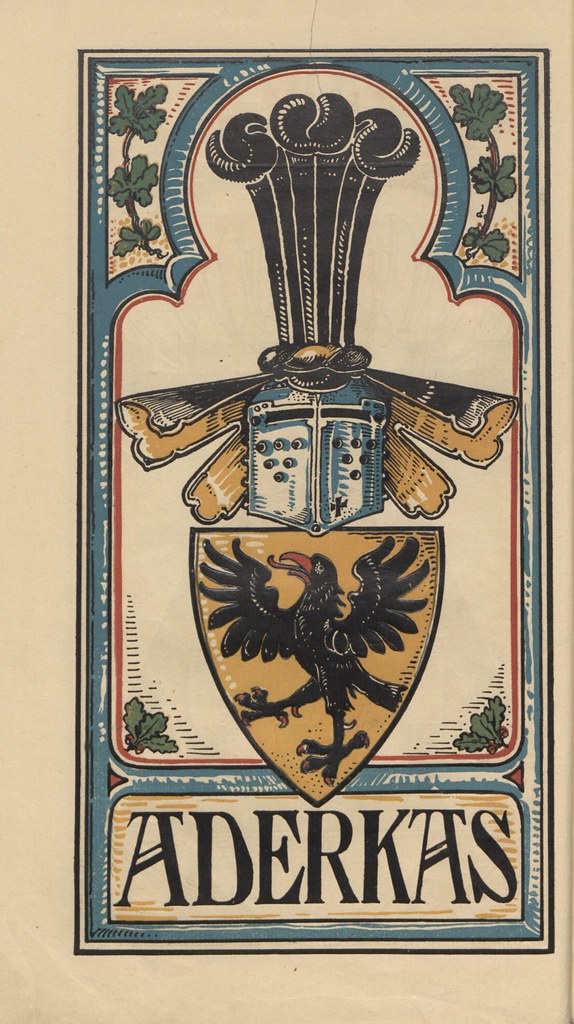
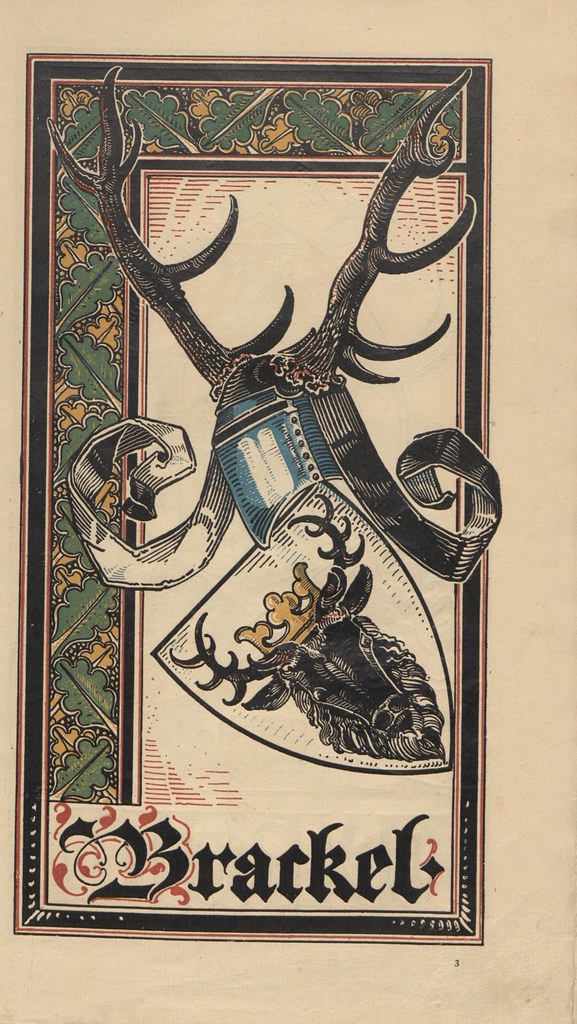
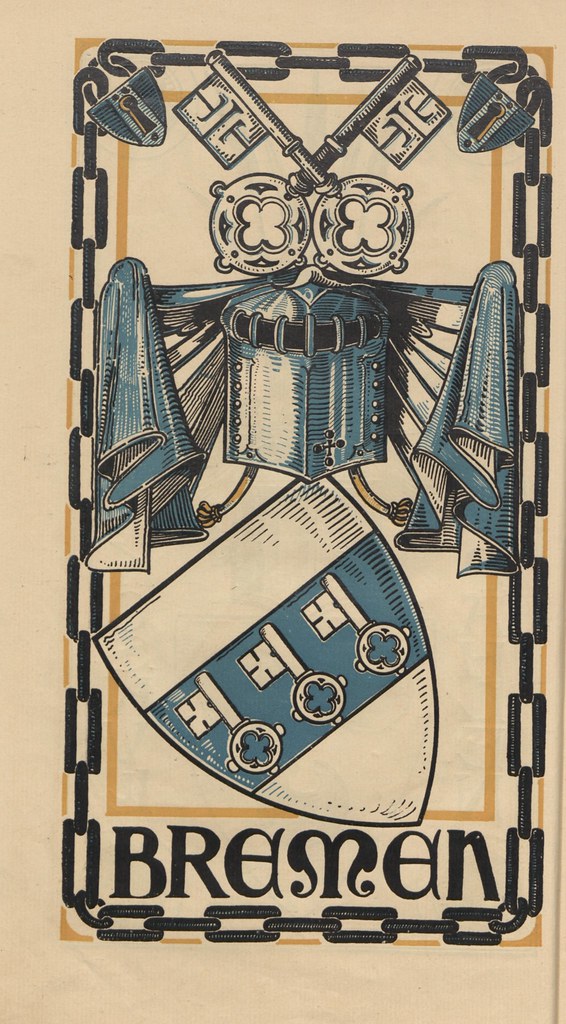
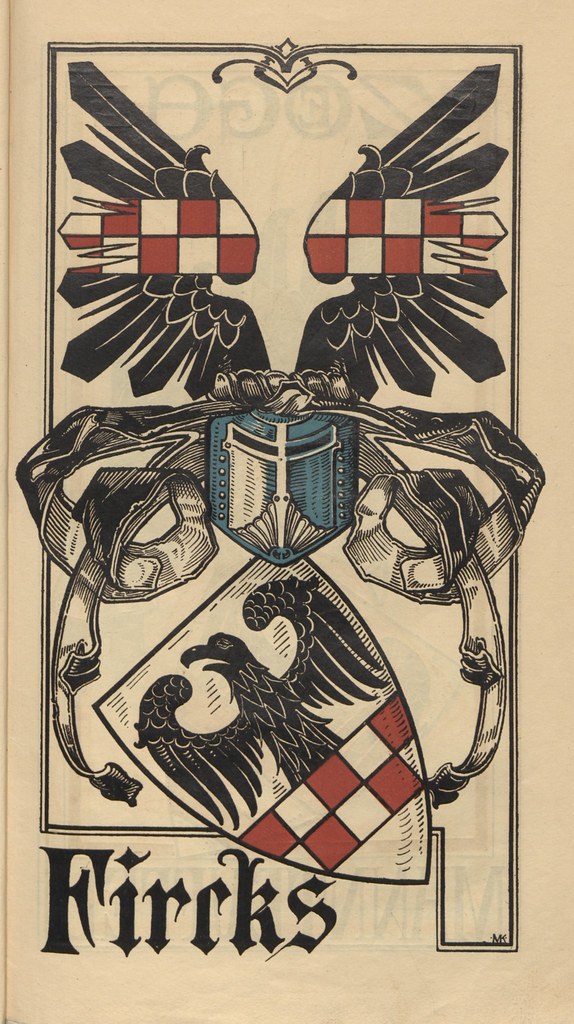


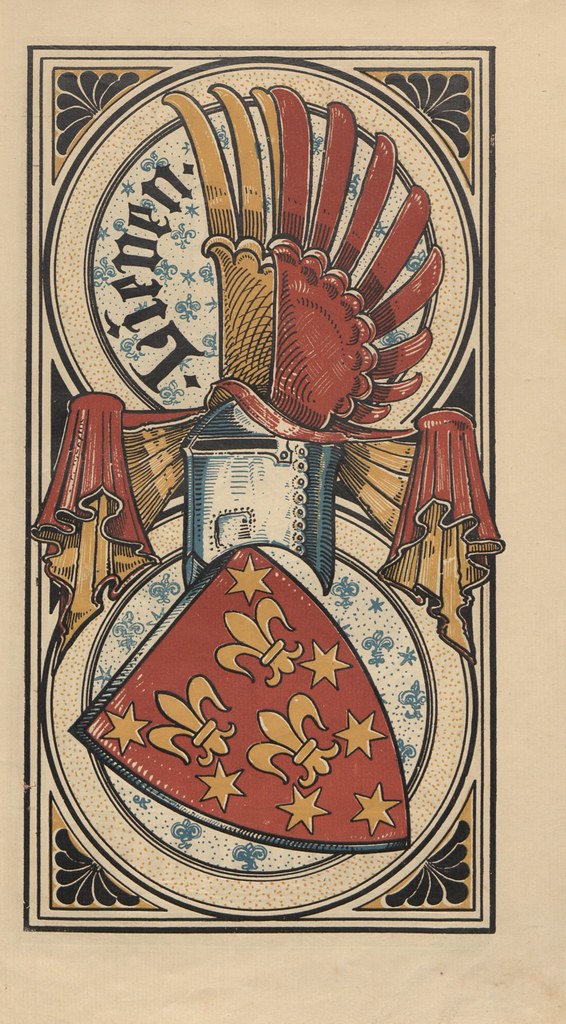
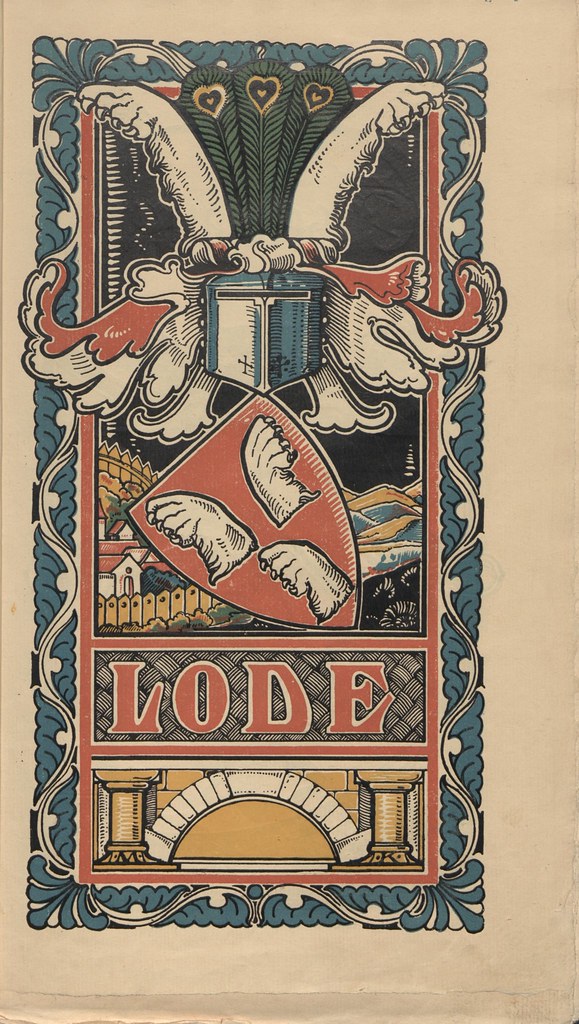
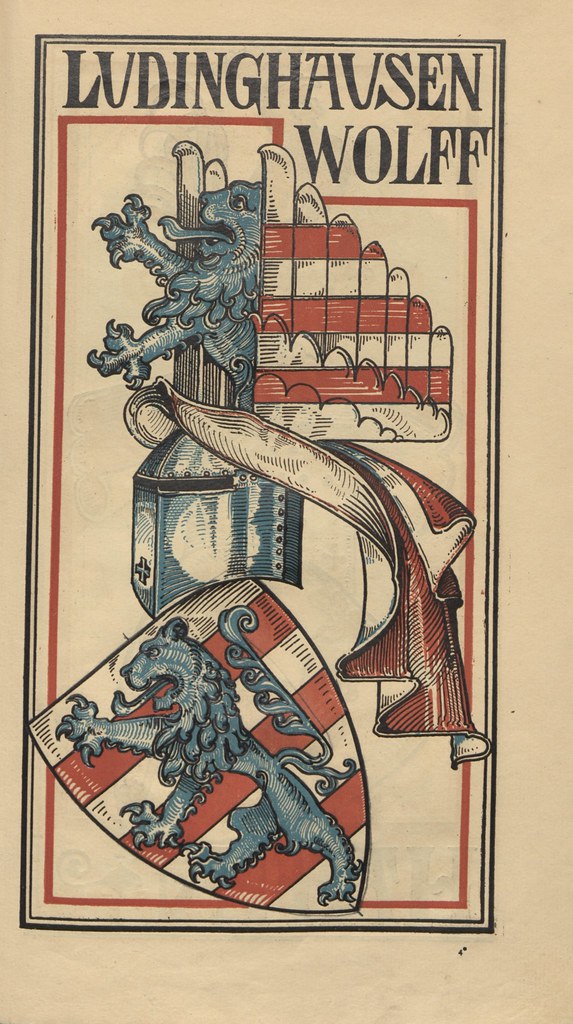
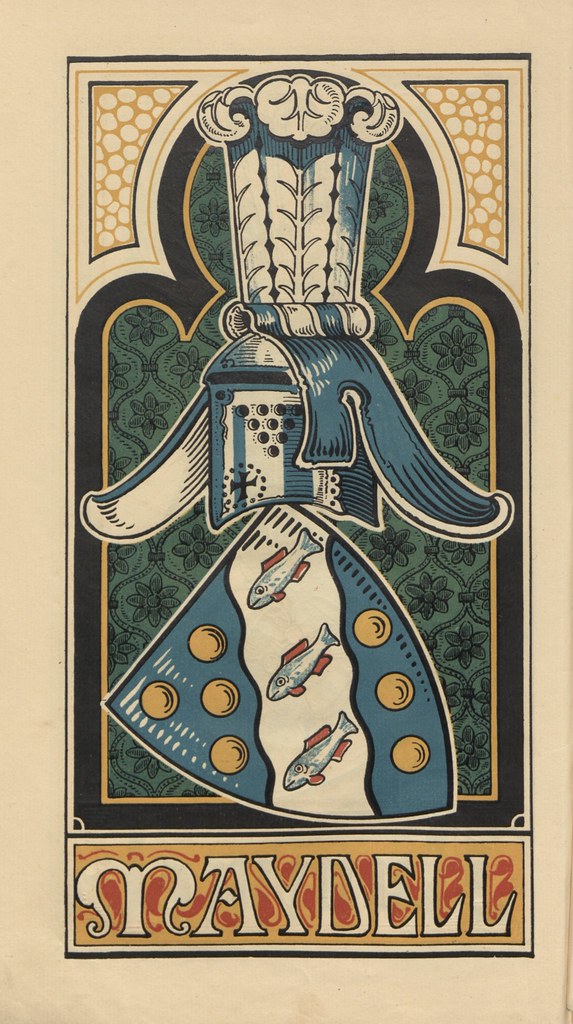








"This publication [..] contains some two dozen coats and crests in colour of nobility of the Russian Baltic provinces, with short genealogical notices. The selection appears a representative one, and includes, among others less famous, such illustrious names as Rosen, Pahlen, Lieven, Wrangel, and Uexkhuell. The Pahlen-Koskull crest, Drie Schilkolben, is uncommon, and we do not remember another example of bulrushes as helm insignia.
The style of design is, of course, German ; but even for German work the drawing is extremely vigorous, and in some cases the directness of effect obtained is quite excellent, though here and there the detail has a tendency to woodenness (i.e., the fish in the Maydell coat), and the mantling is occasionally stiff. As chromo-xylography [w], too, the work is of great merit."
[source: The Genealogical Magazine 1902]
"The Baltic Coat of Arms Calendar, published by the book and art dealer E. Bruhns in Riga and the Riga Art Institute [..] was only published for one year: 1902. Further issues were well planned initially, [but] were never realised. The signature on some leaves [with MK artist] was Martin Kortmann who worked temporarily after 1900 in Riga for the art institute. After 1905 he returned to Berlin.
The vertical format calendar contains 24 Baltic Crests for families, namely: Lode, Tiesenhausens, von der Ropp, Buxhoewden, Brackelsberg, Meyendorff-Uexkuell, Pahlen-Koskull, Bremen, Lieven, Ungern-Sternberg, Wrangel, Aderkas, Rosen, Stackelberg, Luedinghausen called Wolff, Hahn, Orgies, gene. Rutenberg, Poll, Fircks, Manteuffel called. Zoege (Szöge), Foelkersam, Maydell, Rummel and Howen. Artistic representations of the act, who probably set a clear target for simplicity, although heraldic correct, but awkward and wooden, far removed from the artistic design of a sovereign Otto Hupp."
[source (slightly paraphrased translation; last garbled bit left as is)]
'Baltischer Wappen-Calendar 1902' (Baltic States Coats of Arms Calendar) published in Riga by E Bruhns with illustrations by M Kortmann is available online in its entirety via the National Digital Library of Estonia. High resolution individual .tif files (50+Mb) are available.
[The images above are smaller versions of those with some colour boosting and removal of handwriting from the cover page] Please visit the source site to see both the complete heraldry illustration series and the overall layout of the book/album. Note there is a thumbnail page icon in the header section: 'Indeks'.
--Coat of Arms at Wikipedia.
--Baltic States at Wikipedia.
Previous related on BibliOdyssey:
- Armorial Nobiliaire.
- Flagging Heraldry.
- Insignia Nobilium.
- The Fisch Wappenbuch.
- Duke, Dress and Heraldry.
- Bavarian Wappenbuch.
- Heraldic Bookplates.


























































